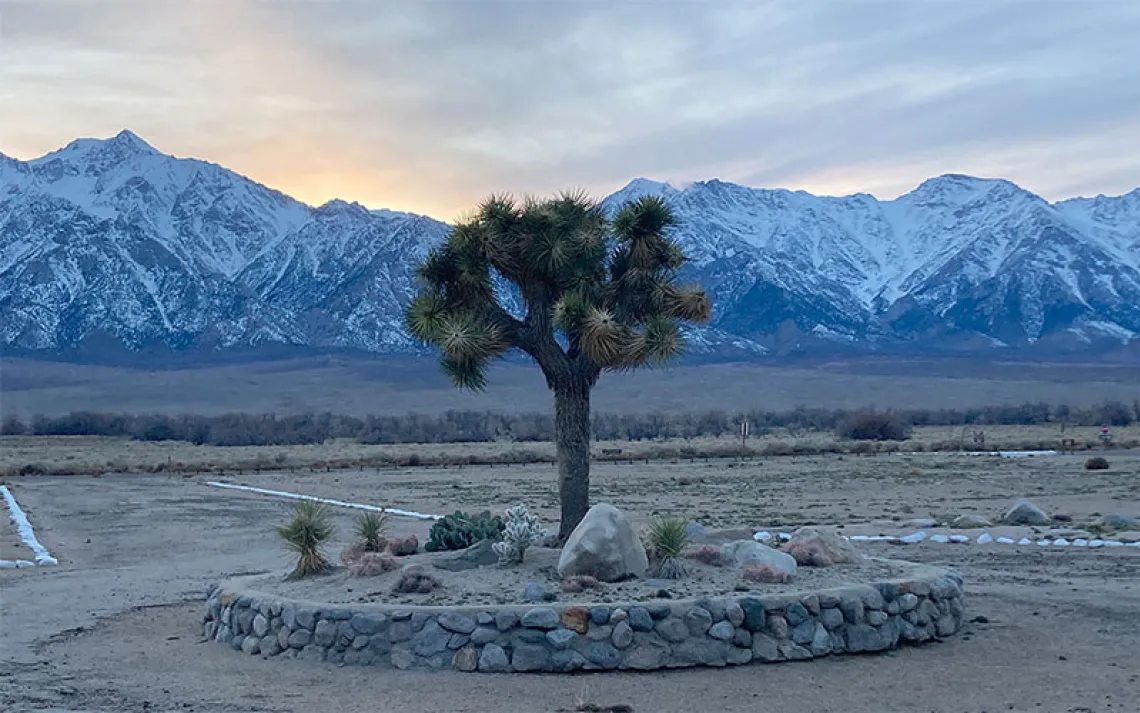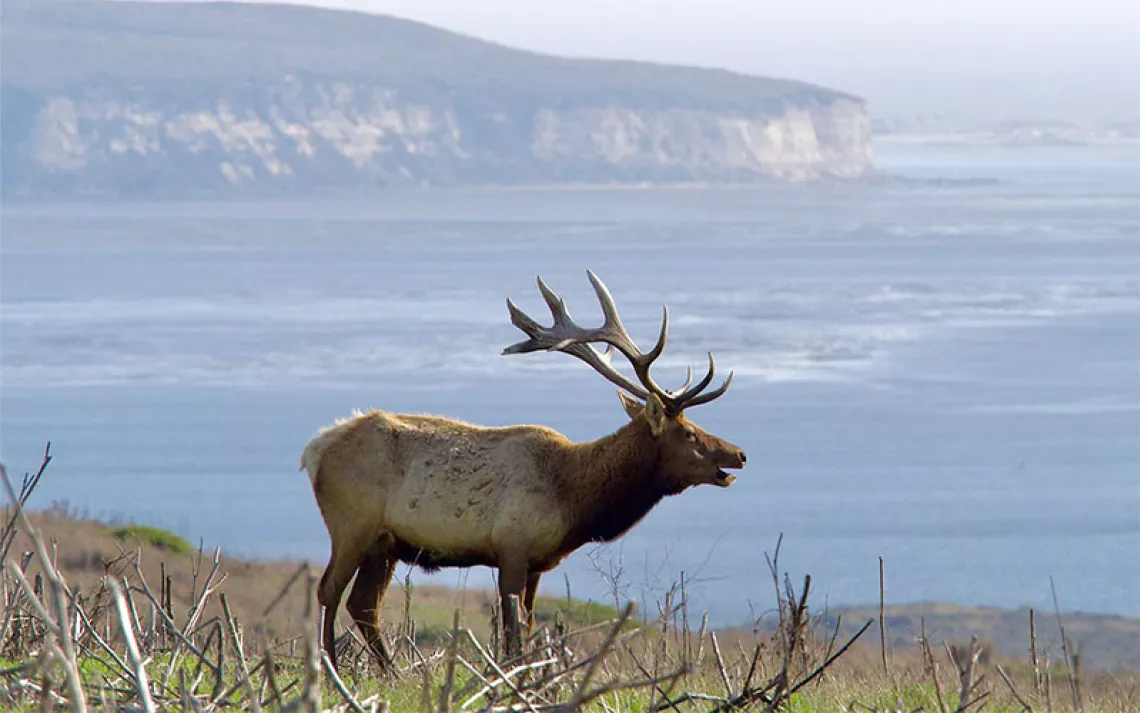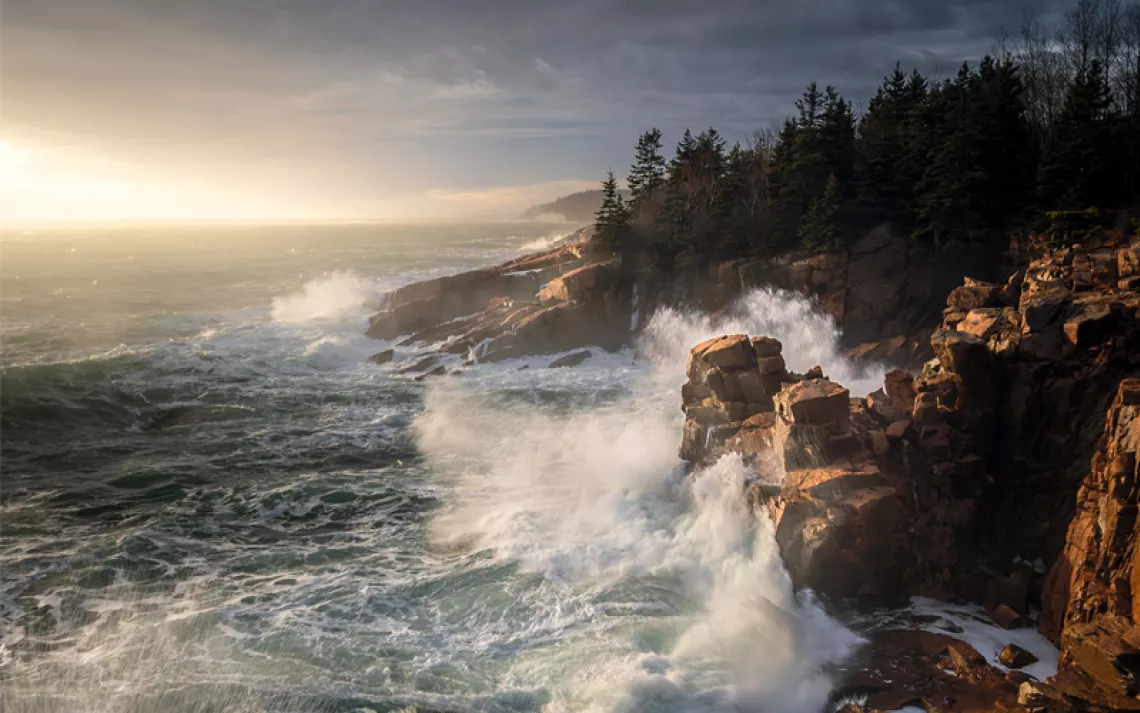The We Players Bring Theater to State and National Parks
All the world's a stage
BUILT IN THE MID-1800s to protect San Francisco Bay from a naval attack, Fort Point resembles a medieval castle. For We Players—an experimental theater company in the Bay Area—the stone-walled citadel was an ideal setting to evoke the gloomy paranoia of Macbeth. And so, several years ago, a Shakespearean climax played out in the fort's courtyard as rain pummeled the cobblestones and traffic thundered across the Golden Gate Bridge a hundred feet above.
"It's the closest we could get to windy, cold, foggy Scotland and still be in San Francisco," says Ava Roy, founder and artistic director of We Players, which in 2008 and 2013-14 staged an interactive version of the 17th-century tragedy at the fort.
Performing plays in outdoor venues is nothing new. We Players, however, has taken the tradition of alfresco theater in a new and ambitious direction by using national and state parks as the stage itself. The theater group's productions transform park settings into scenes, creating theatergoing experiences that blend art, history, and landscape . . . and sometimes a good bit of hiking.

Sign up to receive Sierra News & Views
Get articles like this one sent directly to your inbox weekly.
With this action you affirm you want to receive Sierra Club communications and may vote on policy designated by the Sierra Club Board.
Roy founded We Players in 2000, during her freshman year at Stanford University. The company launched with a production of Romeo and Juliet that, she recalls, "wound its way from the student union and throughout the central campus, ending near Memorial Church." By 2006, Roy—who radiates an ethereal, sometimes androgynous beauty that serves her well in Shakespeare's gender-bending plays—was staging The Tempest along the bay shoreline.
Roy had to navigate a bureaucratic thicket to inspire National Park Service officials with her vision of site-integrated theater. There were concerns about landscape impacts, public safety, the use of usually off-limits areas, and the disruption of park-staff routines. "Government bureaucracies move slower than life, and art moves faster than life," Roy says. "So sometimes there's quite a divide."
Ultimately, the Park Service agreed to let We Players stage six performances at Fort Point. A few key staff attended, "and after that everything clicked," Roy says. "They saw how live theater could be used to bring the history of the park to life."
It has proved to be a mutually beneficial relationship. While the parks provide We Players with unique venues for its work, the plays also introduce the parks to the public. Post-play surveys have revealed that as many as three-quarters of playgoers were first-time visitors to the parks where the plays were staged.
The success of the Macbeth performances led to invitations to produce plays in other parks. In 2010, We Players staged Hamlet on Alcatraz Island. In 2012, the company performed a reimagined version of The Odyssey on Angel Island, a state park and the "Ellis Island of the West." Theatergoers, equipped with maps and schedules, walked miles around the verdant island during the all-day event. During the past year, Roy has brought a thoughtful interpretation of Beowulf to the San Francisco Maritime National Historical Park and led audiences up Golden Gate Park's Strawberry Hill for her fresh-aired take on A Midsummer Night's Dream.
Roy's future plans are even more ambitious. We Players is developing an epic-length version of Miguel de Cervantes's masterpiece, Don Quixote. Roy and a fellow actor will ride a horse and a donkey from the California-Mexico border north to the town of Sonoma, stopping to perform at each of the 21 Spanish missions (or nearby parks) along the way. Imagine, she says, "joining Don Quixote and Sancho Panza as they go to Whole Foods to fill their saddlebags."
This article appeared in the November/December 2017 edition with the headline "All the World's a Stage."
 The Magazine of The Sierra Club
The Magazine of The Sierra Club







